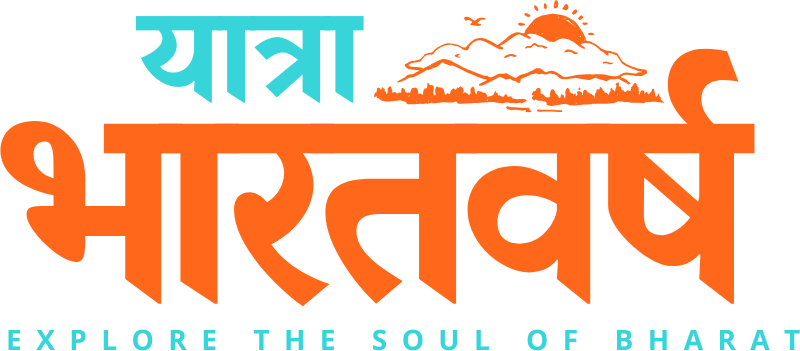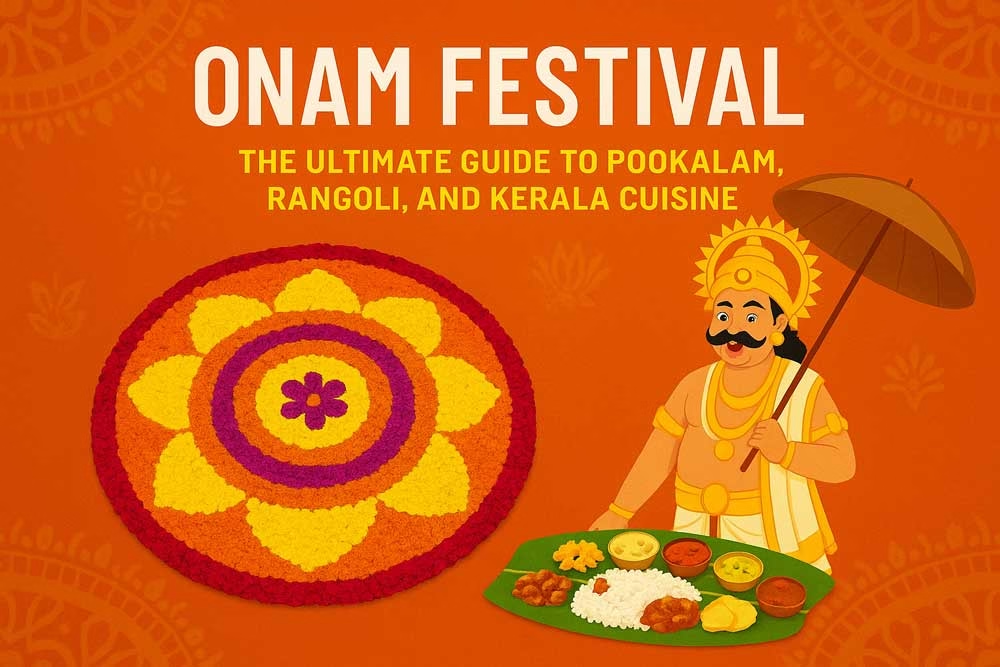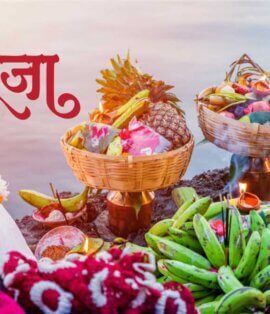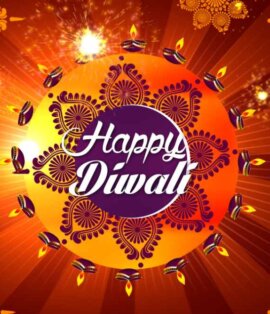Onam is not just a festival—it’s the soul of Kerala wrapped in colors, traditions, and flavors. Celebrated with grandeur by Malayalis across the globe, Onam marks the homecoming of the mythical King Mahabali and the rich cultural heritage of “God’s Own Country.” From vibrant pookalam designs to the grand Onam Sadhya, every detail of this festival reflects the joy of unity, gratitude, and prosperity.
In this ultimate guide, let’s explore everything you need to know about Onam traditions, pookalam, rangoli, Kerala food, and heartfelt wishes in English to share with loved ones.
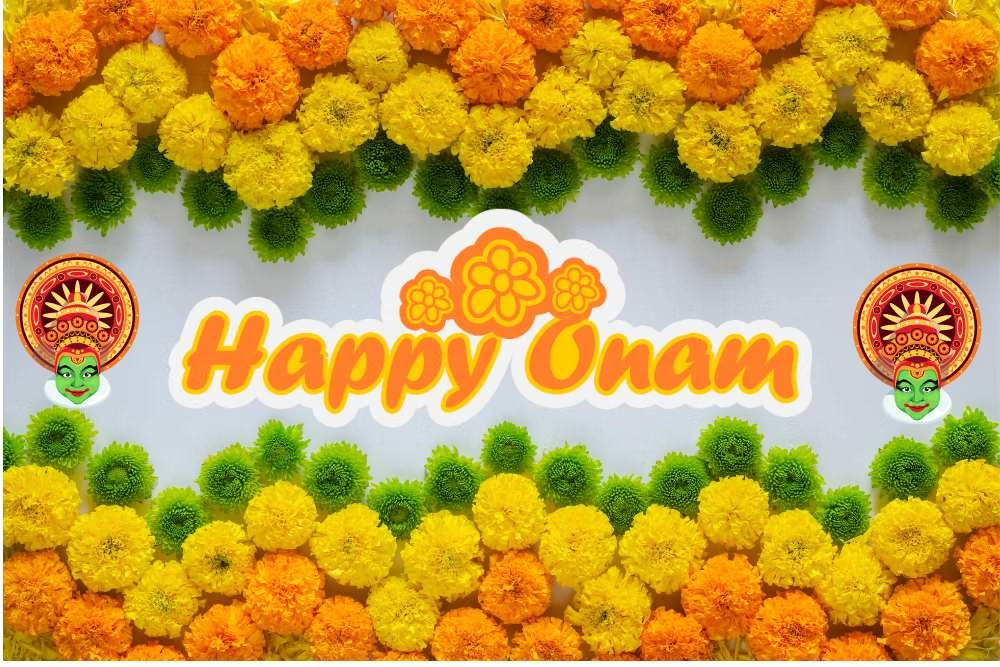
The Cultural Significance of the Onam Festival
Onam is Kerala’s harvest festival, usually celebrated in Chingam (August–September). It symbolizes happiness, peace, and prosperity, and lasts ten days of rituals, traditions, and celebrations.
The festival’s roots lie in the legend of King Mahabali, a just and generous ruler who his people beloved. It is believed that Lord Vishnu, in the form of Vamana, sent Mahabali to the netherworld. However, Mahabali’s deep love for his subjects allowed him to return once a year to see them. Onam marks this divine reunion, and the people of Kerala welcome their king with joy and reverence.
Traditionally, Onam also coincides with the harvest season, making it a time of abundance, family gatherings, and gratitude.
Onam Pookalam Designs: Colors That Speak Traditions
One of the most enchanting aspects of Onam is the pookalam, a vibrant floral carpet arranged in intricate patterns at the entrance of homes.
What is a Pookalam?
The word “pookalam” comes from “poo” (flower) and “kalam” (artistic pattern). It is essentially a floral rangoli created using fresh flowers and petals. Families and communities collaborate to create these stunning designs, symbolizing happiness and prosperity.
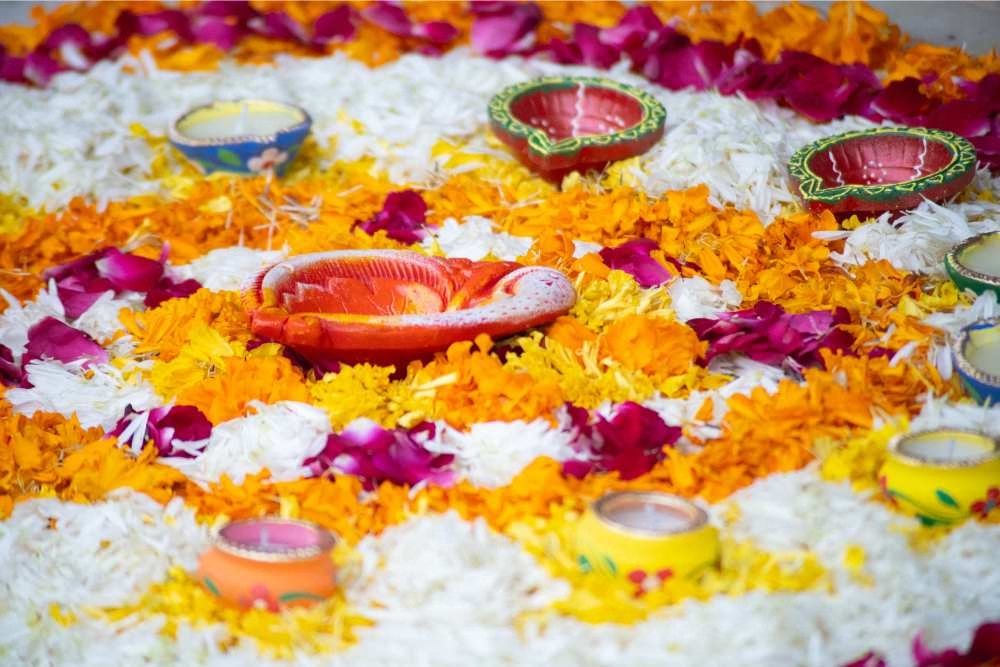
Pookalam Designs Over the Days:
Each of the ten days of Onam witnesses a new design. The pookalam starts small on Atham (the first day) and grows larger every day until Thiruvonam (the tenth day).
Popular Pookalam Designs:
- Traditional Circular Patterns—representing unity and wholeness.
- Lotus motifs— symbolizing purity and devotion.
- Geometric Shapes—combining modern creativity with traditional essence.
- Depictions of King Mahabali—bringing myth and art together.
Modern Touch:
Today, many use pookalam photos shared on social media for inspiration, while others participate in pookalam competitions at schools and workplaces. The joy lies not just in the beauty of the design but in the teamwork and creativity behind it.
Onam Rangoli: A Fusion of Art and Culture
While pookalam is the traditional floral decoration of Kerala, many people also make Onam rangoli using colored powders, rice flour, and sometimes even flowers. Although rangoli is more commonly found in other parts of India, it adds another layer of creativity to the Onam celebrations.
- Symbolism: Like pookalam, rangoli symbolizes positivity, prosperity, and a warm welcome for guests and King Mahabali.
- Design Inspirations: Sun motifs, temple designs, peacocks, and festive lamps are often incorporated.
- Social Media Trends: During Onam, Pinterest and Instagram are filled with creative rangoli and pookalam ideas that encourage families to experiment with new designs at home.
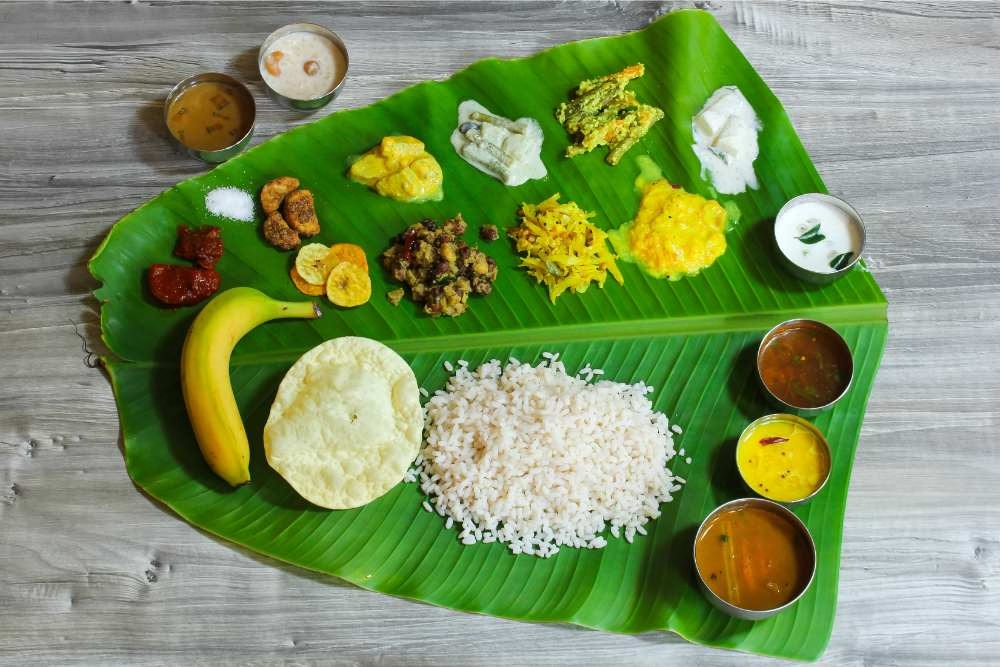
Onam Sadhya: The Grand Kerala Feast
No Onam is complete without the grand Onam Sadhya—a traditional vegetarian feast on a banana leaf. Entire families often enjoy it together, making it one of the festival’s biggest highlights.
What is an Onam Sadhya?
- A multi-course meal with over 20–26 dishes served on a banana leaf.
- The meal is eaten while seated on the floor, representing equality and humility.
- Each dish has unique flavors, from sweet to spicy to tangy, making it a perfect balance of tastes.
Popular Kerala Food Items in Onam Sadhya:
- Rice—the centerpiece of the meal.
- Sambar—a lentil-based vegetable curry.
- Avial—a thick mix of vegetables with coconut and yogurt.
- Kootu Curry—black chana and yams in coconut sauce.
- Olan – ash gourds and cowpeas in coconut milk.
- Kaalan is a yogurt-based curry with raw bananas or yams.
- Pulissery: yogurt curry with ripe mangos or ash gourds.
- Pachadi & Kichadi – yogurt-based sides with cucumber, beetroot, or pineapple.
- Thoran – stir-fried vegetables with coconut.
- Pickles (Achaar)—usually mango and lemon.
- Banana Chips & Sharkara Upperi – fried plantains, sweetened with jaggery.
- Payasam—the crowning glory, a sweet dish (like ada pradhaman or palada payasam).
Every item reflects the rich culinary diversity of Kerala. The balance of flavors makes Sadhya one of the most elaborate vegetarian meals in the world.
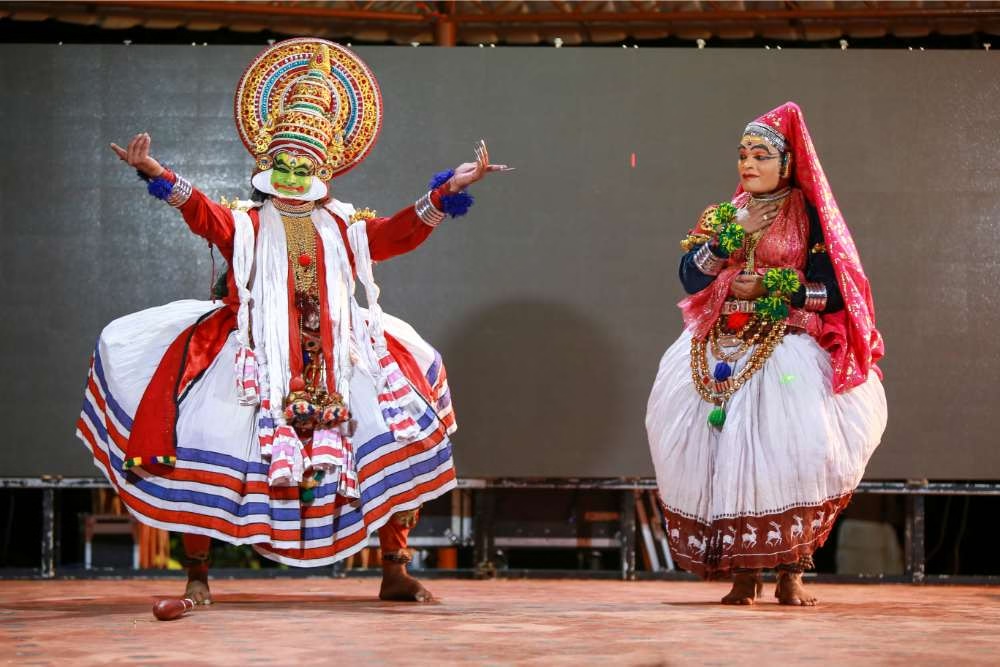
Onam Traditions and Celebrations
Beyond pookalam and sadhya, Onam is packed with cultural festivities.
Vallam Kali (Snake Boat Race): Iconic to Kerala, long snake boats glide through rivers with teams rowing in rhythm to traditional songs. This thrilling competition attracts tourists from around the world.
Pulikali (Tiger Dance): Men paint themselves as tigers and hunters and perform energetic dances in the streets. It’s a vibrant and fun-filled tradition that showcases Kerala’s unique folk art.
Kaikottikali (Thiruvathira Dance): Women in traditional attire perform a graceful circular dance around lamps, celebrating sisterhood and joy.
Fairs and Markets: Onam also brings special fairs where people shop for new clothes (Onakkodi), traditional items, and gifts.
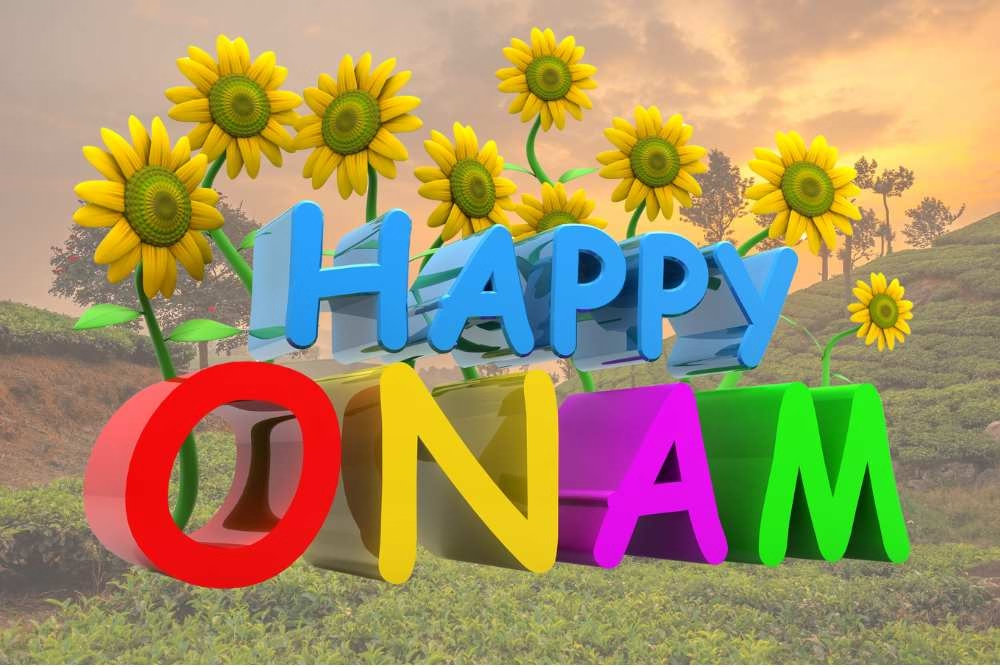
Onam Wishes in English to Share with Loved Ones
Words can carry the festive spirit across miles. Here are some heartfelt Onam wishes in English you can use:
- “May the colors of Pookalam brighten your life with joy and prosperity. Happy Onam!”
- “Wishing you and your family a blessed Onam filled with love, laughter, and delicious Sadhya.”
- “This Onam, may King Mahabali bless you with happiness, good health, and success.”
- “Celebrate the beauty of Onam with flowers, food, and endless memories. Happy Onam!”
- “Onam is the time for family, feasts, and festivities. May your home be filled with abundance.”
You can spread festive cheer by sharing these simple wishes in cards, WhatsApp messages, or social media posts.
Capturing the Spirit of Onam
In today’s digital world, pookalam photos and snapshots of Sadhya dishes are shared widely on Instagram, Facebook, and WhatsApp. Many families document their creativity with before-and-after shots of floral designs or post-group photos in traditional attire. This sharing keeps the festive spirit alive even for Malayalis living abroad.
Why Onam Is More Than Just a Festival
Onam embodies not just rituals, but also togetherness, gratitude, and cultural pride. Each tradition, from pookalam designs to Onam Sadhya, reflects the values of unity, equality, and prosperity. Onam serves as a reminder to Keralites of their roots, no matter where they are.
Conclusion
The Onam festival blends myth, art, culture, and food that captivates hearts across Kerala and beyond. Whether you’re admiring the intricate Onam pookalam designs, enjoying the flavors of the Kerala Sadhya, or sending Onam wishes in English to friends and family, the essence of Onam lies in its ability to bring people together.
So this year, celebrate Onam with flowers, food, and festivities—and cherish the timeless traditions that make this festival one of India’s most beautiful celebrations.
Book Your Kerala Onam Experience Now – Celebrate culture, colors, and cuisine in God’s Own Country this festive season!
